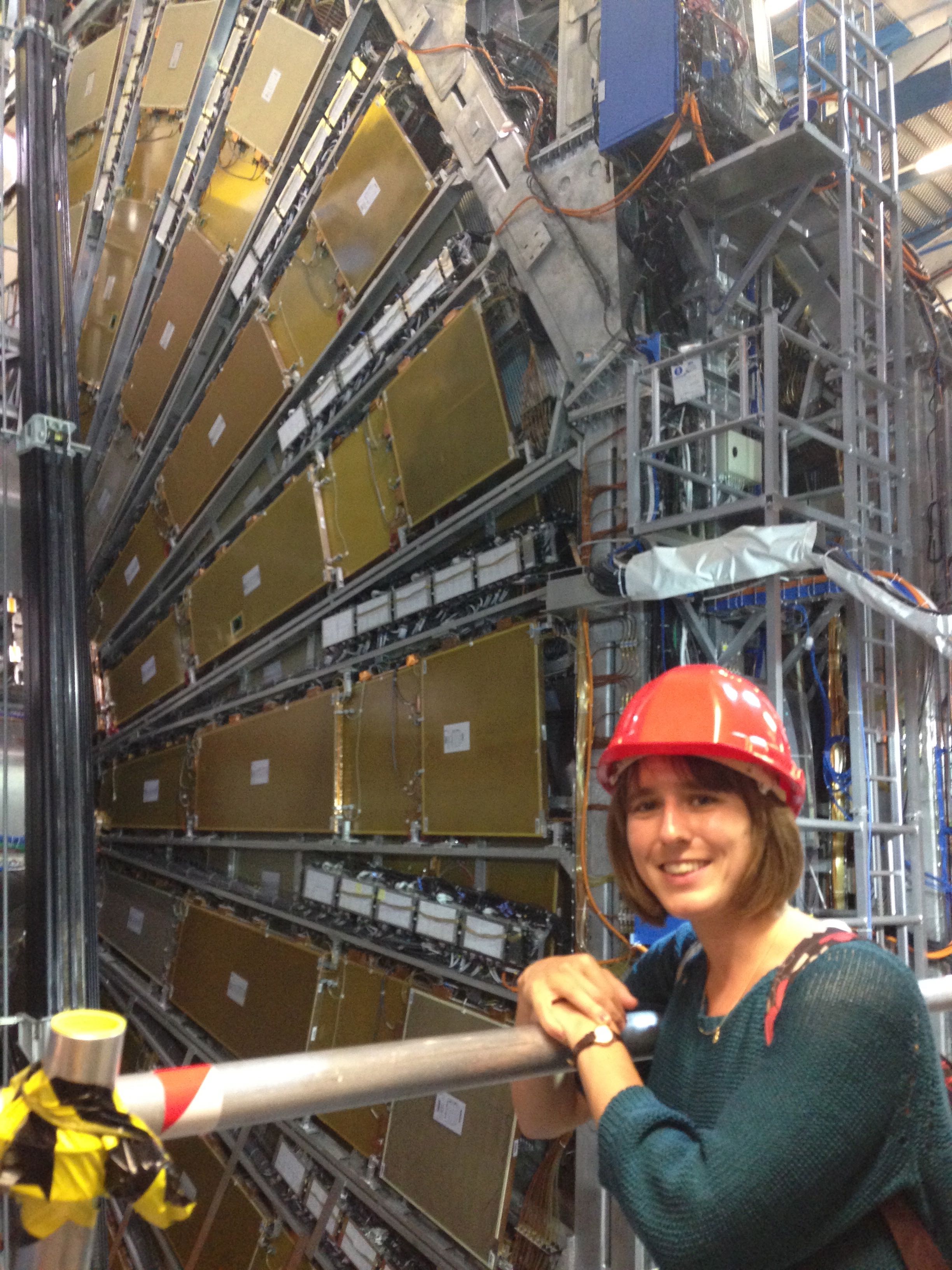 As a researcher on the ATLAS experiment at the Large Hadron Collider at CERN, one of the things I love about my job is that on a day-to-day basis I get to interact with scientists from different backgrounds all around the world. The ATLAS collaboration includes around 3000 physicists from over 175 institutes around the world, all working together to answer fundamental questions about the elementary particles and interactions in the universe. My work focuses on searches for new particles at the LHC, and in particular those that could help explain what makes up Dark Matter in the universe. Astrophysicists now believe that dark matter makes up nearly 25% of the mass energy content of the universe (with only 4% being normal `baryonic matter’ which we can explain and the rest being dark energy, a mysterious substance that actually causes the expansion of the universe to accelerate). Although we don’t currently know what dark matter is made of, there is strong evidence that it could constitute a “weakly interacting massive particle” (or WIMP) which could thus be searched for in the high energy collisions at the LHC. The LHC collides bunches of protons together around 40 million times a second, and recording these collisions requires enormous detectors (the ATLAS detector is around half the size of Notre Dam Cathedral in Paris and weighs as much as the Eiffel tower). Most particles produced in collisions decay instantly so we can only indirectly infer their existence by trying to reconstruct information from their decay products. The data is read off the detector, reconstructed and stored at large computing sites all over the world waiting to be analysed offline by particle physicists.
As a researcher on the ATLAS experiment at the Large Hadron Collider at CERN, one of the things I love about my job is that on a day-to-day basis I get to interact with scientists from different backgrounds all around the world. The ATLAS collaboration includes around 3000 physicists from over 175 institutes around the world, all working together to answer fundamental questions about the elementary particles and interactions in the universe. My work focuses on searches for new particles at the LHC, and in particular those that could help explain what makes up Dark Matter in the universe. Astrophysicists now believe that dark matter makes up nearly 25% of the mass energy content of the universe (with only 4% being normal `baryonic matter’ which we can explain and the rest being dark energy, a mysterious substance that actually causes the expansion of the universe to accelerate). Although we don’t currently know what dark matter is made of, there is strong evidence that it could constitute a “weakly interacting massive particle” (or WIMP) which could thus be searched for in the high energy collisions at the LHC. The LHC collides bunches of protons together around 40 million times a second, and recording these collisions requires enormous detectors (the ATLAS detector is around half the size of Notre Dam Cathedral in Paris and weighs as much as the Eiffel tower). Most particles produced in collisions decay instantly so we can only indirectly infer their existence by trying to reconstruct information from their decay products. The data is read off the detector, reconstructed and stored at large computing sites all over the world waiting to be analysed offline by particle physicists.
It is very rare to perform a LHC search on your own, it normally takes a group of a dozen or more physicists working together to produce the final result.
For example, I tend to work a lot on the statistical analysis, which considers quantitatively the level of agreement between the observed data and the prediction based on the Standard Model (which encapsulates our current understanding of the elementary particles on the universe). Another aspect of my work that I appreciate is the variety of skills that I have gained and used over the years in carrying out my research. The large volumes of LHC data makes computer programming unavoidable, so I have had to learn a variety of programming languages including c++ and python. In addition to that, working in such a large collaboration requires strong communication skills. Before I started my PhD I had very limited experience of public speaking however I very quickly became accustomed to presenting on a weekly basis. I have also had the opportunity to present at international conferences around the world, including in Taipei, Moscow and later this month in Adelaide.
There are so many fundamental questions within the sciences that are waiting to be answered.
Challenges range from finding alternative energy sources that can be exploited on a global scale, to developing new techniques for the diagnosis and treatment of life-threatening diseases. We need young women (and men) with a passion for new knowledge, the creativity to solve problems and the personal qualities to engage effectively in interdisciplinary teams. It’s an exciting and rewarding field and can provide you with many unexpected opportunities along the way.
Sarah Williams
Alumna